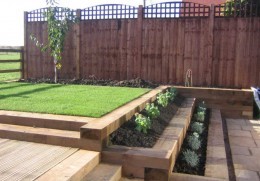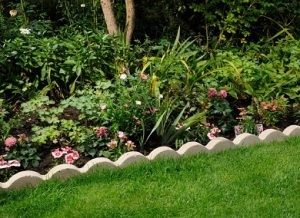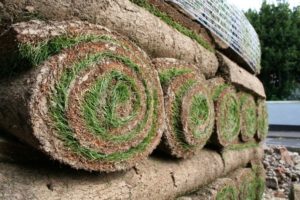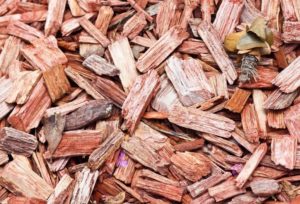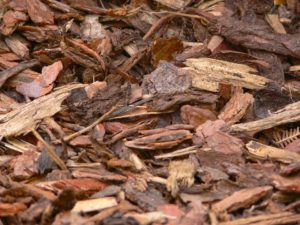Top Tips on Creating a Mediterranean-Style Garden
A Mediterranean look is one of the most popular themes for many gardeners – the plants tend to be highly distinctive and low-maintenance, and your garden will become a place for relaxation rather than work.
Madingley Mulch are based on the edge of Cambridge and supply a wide range of garden essentials, including garden patio slabs, gravel and garden stones. Here we look at five key components which you should consider if you want to create your own slice of the Mediterranean in your garden.
Create a Patio for Outdoor Living
Outdoor dining is a longstanding tradition in most Mediterranean countries. The most effective way of creating such a space is to lay down some paving slabs to create the perfect patio. These stand up to a summer drought far better than grass will, and during winter they will remain clean and easy to walk on.
Go for good-quality tables and chairs which you can leave out all the year round. Metal furniture will be a better investment than plastic. If you want to be more ambitious and offer more than barbecued food, you can add an outdoor kitchen or pizza oven to your patio. And remember to factor in plenty of shade, as you won’t want to get too hot, particularly if you are cooking food on your patio.
Paving and Pathways
Paving slabs can also act as garden dividers or footpaths. They are low-maintenance and can be particularly effective in small spaces. You can choose slabs with pink and red hues, or gravel and natural stone styles, to give your garden a Mediterranean ‘feel’.
At Madingley Mulch our Premier Riven garden patio slabs are available in dark grey, natural, stone or red, and we can also supply Indian Sandstone slabs in raj, camel, mint or grey.
Add a Water Feature
These add a focal point to your garden, and smaller water features can often be effective. Digging out a large pond or pool does involve a lot of work, and you may also have to top up the water levels during dry spells. Terracotta storage jars are another option which can create similar effects on a smaller scale
Fountains which recycle the water are another option. These could be installed either on the patio or against the wall, and the bubbling sound is particularly satisfying.
Lay Down Mulch or Gravel
Before planting out your new garden, think about laying down some mulch, soil conditioner or compost. These can suppress the weeds and improves the soil’s drainage and is particularly important in East Anglia, where the heavy clay soil is not ideal for drought-tolerant plants.
At Madingley Mulch we have a range of soil improvers, including Denise’s Delight, an exclusive mixture of Fen soil, wood shavings, horse manure and other plant nutrients. This is ideal for use in raised beds, which are another key feature of a Mediterranean-style garden.
An alternative is to use a layer of gravel or pebbles. In a hot summer, moisture condenses underneath stones, encouraging the growth of plant roots, while during a wet winter the rain will soak in far faster than on concrete areas, reducing the risk of flooding. We can supply a wide variety of decorative pebbles and stones.
Appeal to Sight and Smell
Herbs such as lavender and rosemary are staple ingredients of this type of garden, providing the right sort of fragrance. Good flowers to plant include geraniums and bougainvillea, as these will both add plenty of colour. You don’t have to plant them in the ground, either – terracotta pots and vases are a common sight in Mediterranean gardens. However, you will need to water these reasonably frequently, as potted plants have a smaller reservoir of moisture to draw on during dry spells.
If you fancy something larger, you could try growing either cypress, olive or palm trees. These may need protection from frost if the temperature is likely to dip below freezing point, and they should be planted in the sunniest part of your garden.
Garden Patio Slabs from Madingley Mulch
Madingley Mulch supply key components for a Mediterranean-style plot, including garden patio slabs and decorative pebbles, from its base on the outskirts of Cambridge. Follow the link above to discover our range of products and prices. And if you need any advice about what to plant in your Mediterranean-style garden – and when – our staff will be happy to talk to you.
If you want to place a bulky order with us, we can deliver it to you. We run a regular delivery service to towns and villages in the region, including St Ives, St Neots, Royston, Ely and Newmarket. Orders are delivered free to all addresses which are under 15 miles of our base on the edge of Cambridge, while a standard £20 charge applies to all deliveries within 24.5 miles. We can also deliver to addresses further afield.
How to Keep Your Lawn in Tip-Top Condition
A well-maintained lawn is a boost for any garden. There are plenty of health benefits – the grass absorbs harmful dust and pollen, for example, improving the air quality. Also, nothing beats the sight and smell of a freshly-mown patch of grass.
Leading lawn turf suppliers Madingley Mulch are based on the edge of Cambridge. Here we have compiled these five top tips for making sure you can enjoy some gorgeous green grass all the year round.
Stay on Top of the Cutting
Spring is the time when you will be thinking about getting your lawn mower out of the garden shed. For the first cut of the year, make sure your mower is on its highest setting, as taking too much off too early can damage the grass.
The frequency and the height of the cut will vary depending on the time of year. In spring and autumn, you shouldn’t need to cut your lawn more than once a week. In summer you may need to do it more regularly, particularly if there is good growing mix of sunshine and showers. The mower should also be on a lower setting,
Kill the Moss and Weeds
From late March onwards, you should be trying to get rid of any unwanted moss or weeds, so your grass isn’t competing with them for valuable nutrients in the soil. Remove them either by hand or with a fork, then aerate and scarify the grass.
If manual controls haven’t worked, then try artificial ones by applying a fertiliser which will get rid of the problem plants. Within a couple of weeks, you should be able to rake out all the dead moss and weeds. Don’t forget to repeat this process in the autumn, when the grass-growing season is over.
Water it Well
The variable British weather means that it can be tricky if you want a lush, green lawn all the year round. Try to water when the soil dries out, but before the colour of the grass changes. Once a week during hot weather should enough, and don’t water during the heat of the day. Early morning or late evening is the best time, as it won’t evaporate as quickly.
If your grass turns brown, don’t despair, as it will usually recover, given time. And remember too much water can do just as much damage as too little, because excess moisture encourages moss and means your grass will have shallower roots.
Running Repairs
Does your lawn have any bare patches? Spring or autumn are the best times to repair or overseed them. Rake the surface before sowing in the seed, then lightly rake it into the ground.
Consider putting up some protective netting if there are hungry birds around. If the weather is dry for the first two or three days after overseeding, then water the affected areas gently. You should see the first blades of grass around a week after the seeds were sown.
Laying Down New Turf
If your lawn requires more radical surgery, you may have to consider laying down new turf. Autumn is the best time to create a new lawn, as the grass roots can establish themselves in the soil while it is still warm and moist. Make sure the soil you are laying your turf on is free of weeds, but don’t use weedkiller, as this can stunt the growth of the grass. Either remove them by hand or rotavate the soil to a depth of 20-25cms, then dig in some soil conditioner or well-rotted compost, such as our exclusive products Tony’s Tonic or Denise’s Delight.
The turf should be laid within 24 hours of delivery. You may need to add or remove soil to make sure the rolls are laid flat. Once down, spread in a thin mix of soil or compost and sand over the top to fill in any minor gaps and help the rolls knit together. Water it well and don’t walk on it for the first few days.
Lawn Turf Supplies from Madingley Mulch
Lawn turf suppliers Madingley Mulch are the people to call to keep your grass in pristine condition. Our turf is all grown close to our base near Cambridge. We can also meet all your needs when it comes to top dressing, soil conditioners, compost and grass seed. If you have any questions, talk to our friendly, experienced staff.
If you live within 15 miles of us, we can deliver all your turf free and our weekly routes include Ely, Newmarket, Saffron Walden, Huntingdon, St Ives and St Neots. We apply a standard £20 charge for addresses up to 24.5 miles away, and we can also deliver further afield as well.
Five Practical Uses of Railway Sleepers in Your Garden
When travelling by train, the chances are you don’t give railway sleepers a second thought. But they provide the backbone for thousands of miles of track across the UK – and have plenty of other uses too.
Garden railway sleepers are just one of a wide range of products Madingley Mulch supply from our base on the edge of Cambridge. Here are our top five suggestions for improving your garden with these versatile cuts of wood.
Marking Out a Path
If you want to create a rustic look in your garden, sleepers are an attractive alternative to paving slabs. They will age naturally over time and are particularly effective if you want to create a cottage garden. It will be worthwhile treating the sleepers with a preservative, as the wood can get slippery in wet weather.
Fantastic Furniture
You can fashion some stylish garden furniture out of sleepers – and you don’t even need to be an expert DIYer! You can create a simple, Japanese-style table simply by lining up a few pieces of the wood together. If you want something slightly more ambitious, then simply cut off a section to create the table legs.
Wooden chairs and benches can be created in a similar way – and you don’t have to worry about them blowing away in winter, unlike plastic furniture.
Creating a Raised Bed
Raised beds are a convenient and efficient way of growing a wide range of plants, particularly fruit and vegetables. You can tailor the soil types and drainage to whatever you want to grow, without worrying about the effect this will have on other plants. And because of their durability and strength, wooden sleepers make the ideal framework for this type of feature.
At Madingley Mulch, we can offer an exclusive soil conditioner, Denise’s Delight, which is ideal for all raised beds. Its mix of Black Fen soil, horse manure and other plant nutrients will give your plants every chance of flourishing, whether you live in Hertfordshire, Essex, Suffolk or Cambridgeshire.
Adding Some Decking or Terracing
Decking or terracing is an excellent way of adding to your living space by extending outwards into the garden. It can also cover up any uneven ground.
You can either use railway sleepers as the support structure, or for the whole project – although they will need more work to put together and could prove more expensive than purpose-built decking and terracing.
Creating a Boundary
If you want to separate out different parts of the garden from each other, then using these versatile wooden planks is one way to do it. For instance, you can use them to clearly define where your lawn ends and your flower beds begin.
Alternatively, you can use them to create different ‘zones’ in your garden, with different styles. Children’s play areas, dining spaces and wildlife gardens can all be accommodated in the same garden, simply by laying a few sleepers on top of each other.
Garden Railway Sleepers from Madingley Mulch
Madingley Mulch supply new sawn oak garden railway sleepers from our base on the edge of Cambridge. These are ideal for all types of landscaping projects, including walls, steps, decking and terracing. If you need advice on your landscaping project, then our friendly, knowledgeable staff will be happy to talk to you. You can also follow this link and leave a message via email.
If you have a big order, we can deliver them to your home. We offer a weekly service to Royston, Saffron Walden, Newmarket, St Neots and Ely, and other towns and villages in the area. Delivery is free to all addresses within 15 miles, and there is a standard £20 charge if you live between 15 and 24.5 miles away. We can also deliver to addresses further afield as well.
Five Key Jobs for Your Garden This Spring
Now is the time for gardeners to spring into action – literally! The longer days and shorter nights mean now is the time to get busy in the back garden to make sure it looks at its best during the peak summer months. Here we look at five key jobs to complete during the spring.
Improve Your Soil
Don’t forget to lay down some soil conditioners, compost or mulch over the next few weeks. This will help give all your new plants a great start, as well as giving existing flowers and shrubs a timely boost. All of them also will help stifle any weed growth in your beds.
At Madingley Mulch, we supply bags of soil, or soil with conditioners added, such as Denise’s Delight, from our base on the outskirts of Cambridge. This is a product unique to us and contains Fen soil, wood shavings and horse manure, and is ideal for raised beds and vegetable patches.
Fencing
Providing you can be reasonably confident that the worst of the winter weather is over, then the spring months are the best time to give your fencing a good makeover. If it has been damaged by cold, wet or windy weather, then give the panels a fresh coat of paint.
It may be more cost-effective to replace any damaged panels completely. Again, spring is a good time of year to carry out this work, as you shouldn’t have to worry about summer heat warping the panels, and there won’t be any frost to make the ground too hard to dig post holes in.
Pruning
Some of your winter shrubs will have finished flowering by now, so it is the ideal time to cut them back. Smaller plants such as lavender, buddleia and ornamental grasses also benefit from this approach.
Conservatory climbers which need protection from frost, such as bougainvillea, and hardier plants such as wisteria, also need cutting back now to promote new growth and reduce the risk of disease.
Planting
If you fancy growing some vegetables from seed, now is the time to start sowing. Tasty crops you could consider planting include raspberries, blackberries, gooseberries, redcurrants and blackcurrants.
To prevent them being a prime target for hungry birds or insects, you should give your crops plenty of protection. Netting or mesh will also help prevent your fruit and veg from being damaged by sudden downpours of untimely frosts.
Looking After Your Grass
Your lawn needs plenty of care and attention as well as your plants. Make sure any moss and weeds have been removed, either by hand or with a weedkiller. Get rid of any bare patches by breaking up the area first with a fork, raking it, then planting some grass seed.
However, if your lawn is already in excellent condition and is showing some signs of early growth, for instance after a mild winter, then you could give the grass its first cut of the year.
If your garden contains any ornamental grasses, then cut back deciduous varieties and tidy up evergreen ones.
Outdoor Gardening Supplies from Madingley Mulch
Madingley Mulch can meet all your gardening needs this spring. We stock a comprehensive range of outdoor gardening supplies from our store on the edge of Cambridge, including weedkillers, grass seed, fence panels, mulch, compost and soil conditioners. Follow this link if you would like to see our full range of products.
We have customers throughout Cambridgeshire, and also in Essex, Hertfordshire and Bedfordshire – we offer free delivery to all addresses within 15 miles, including Madingley, Oakington, Somersham, St Ives, Huntingdon and Houghton, and charge just £20 for all orders within 24.5 miles. We can also deliver further afield as well. Your order can be delivered in bulk or small bags, on pallets, as a loose load or via weighbridge collection.
Key Advantages of Garden Edging Stones
Are you tired of weeds growing into your flower beds? Are you worried you don’t have the time to devote to keeping your garden neat and tidy? Edging stones could be the answer – and will be a stylish, inexpensive addition to any garden.
At Madingley Mulch, we are suppliers of decorative garden edging stones to customers in Suffolk, Cambridgeshire, Essex and Hertfordshire. Here we outline their key advantages.
It Cuts Down Your Workload
One of the biggest problems of any garden is that plants grow where you don’t want them to. Installing decorative stones well above and below the soil line should stop any weeds, and invasive couch grass, from encroaching into your flower beds.
It also makes other tasks such as mowing and strimming much simpler as you can see clearly where the lawn ends and the flower beds begin – and you don’t have to worry about any grass clippings blowing into onto your prized plants.
It Keeps Mulch Within the Plant Beds
As well as keeping weeds out, edging also keeps composts, soil conditioners and mulches in. This means your flowers and plants will enjoy the maximum benefit of products such as Madingley Mulch’s Denise’s Delight, an exclusive mixture of Black Fen soil, horse manure, wood shavings, humus and other plant nutrients.
We also offer a variety of other soil improvers, including Tony’s Tonic, a mix of wood shavings and horse manure, horticultural grit and spent mushroom compost, from our store near Cambridge.
It Protects Driveways and Paths
Driveways and paths also benefit from garden edging, particularly if they contain gravel or stone chippings. Without this barrier, the stones can easily end up inside your home, or encroach onto the lawn, potentially damaging your mower.
Edging can also protect asphalt and concrete driveways from cracking or chipping – and it will show motorists exactly where they can and can’t park their vehicles!
It Gives Your Home Kerb Appeal
There are plenty of aesthetic advantages to installing edging as well. It gives your garden a much more clearly-defined, tidy look, showing that you care about it, even if it has reduced your horticultural workload. It’s the very definition of ‘kerb appeal’ – a phrase estate agents use for properties which are much more attractive to would-be buyers.
Edging also helps to separate out different parts of your garden, making it easy to create separate zones such as wildlife-friendly beds and children’s areas.
Decorative Garden Edging from Madingley Mulch
Madingley Mulch supply 600mm long decorative stones for garden edging along pathways, drives or garden borders to customers in Suffolk, Cambridgeshire, Essex, Hertfordshire and Bedfordshire. We also supply other attractive products for your garden, such as picket and lap panel fencing and trellises, at highly competitive prices from our shop on the outskirts of Cambridge. Follow the link above to find out more about our products and prices.
We offer a weekly delivery service to many towns and villages in the region, including Newmarket, Saffron Walden, Ely, Royston and Huntingdon. Delivery is free to all addresses inside 15 miles from our base on the edge of Cambridge. For all addresses within 24.5 miles, there is a standard £20 charge, and we can also deliver further afield as well.
Top Tips on Getting the Most Out of Your Allotment This Year
The attraction of growing your own produce, as well as saving money on your food bills, mean that the demand for allotments is on the increase. The National Allotment Society believes there are around 330,000 plots in the UK, and at least 90,000 more people are on a waiting list.
Madingley Mulch specialises in allotment supplies to customers in Bedfordshire, Cambridgeshire, Essex, Suffolk and Hertfordshire. Here we look at five key ways in which you can get the most out of your plot this year.
Planning and Preparation
If you have just been allocated one, it is essential to know what will grow well in your allotment’s soil, and which areas get the most sun. You can check the soil with a simple pH calculator. In East Anglia, most gardens have a heavy clay soil, which can be difficult to grow plants in because it does not drain very easily.
Talk to your fellow allotment-holders to find out what they have had the most success in growing – or ask our advice at Madingley Mulch.
Don’t be Too Ambitious at First
It may be best not to try to grow lots of different fruits and vegetables which need a lot of TLC, particularly if you haven’t got the time to devote to it. Perennials such as tomatoes, blueberries and strawberries are recommended for beginners as they live for more than two years, returning each spring from their rootstock.
Spending half an hour in your allotment two or three times a week is far better than doing one full eight-hour stint – then not being able to face it again for another couple of weeks because you’ve put your back out!
It’s also worth stocking up on a new set of garden tools – clearing and weeding your plot is hard work, which is even harder if your spades, forks and hoes are old, rusty or blunt. At Madingley Mulch we supply a range of high-quality Spear & Jackson garden tools which are made from heat-treated carbon steel and weatherproofed ash for additional strength.
And don’t be afraid to give nature a helping hand if you are concerned about the quality of the soil. At Madingley Mulch we exclusively supply Denise’s Delight, a mix of Black Fen soil, horse manure, humus and other plant nutrients, which offers gardeners in Essex, Cambridgeshire and throughout East Anglia the advantages of both soil conditioners and compost. Adding this to your plot should help give you lots of tasty produce.
Avoid Waste
There is little point in growing exotic fruit and veg if you’re not going to eat it. It’s helpful to make a list of your family’s favourite recipes and work out what is going to be the most useful.
You can also work out which vegetables grow well together, and which don’t. For instance, onions, chives, leeks and garlic compete for the same soil nutrients, so disperse them throughout your allotment. On the other hand, lettuces, radishes and other quick-growing plants, which are sown between melons and squashes, can be harvested long before the vines need any extra space.
If you have a new packet of seeds, try to avoid emptying it out in one go – if you do, everything will ripen at the same time, and you could be left with large amounts of unused fruit or veg. Instead, where possible, try what is known as ‘succession sowing’ where you plant a few seeds every few weeks. This will ensure a steady supply of tasty fare throughout the growing season.
Herbs Make Perfect Scents
Although they might not seem an obvious choice, herbs are a valuable addition to any allotment. Their strongly-scented leaves can deter some types of pests. For instance, French marigolds grown alongside tomatoes will help keep aphids at bay, while sage repels cabbage moths.
Growing them close to vegetables can also help improve the latter’s flavour – for example, lettuce or tomatoes can be improved If you cultivate basil next to them.
Lay Down Mulch
One of the biggest bugbears of allotment-holders is weeding. Regularly clearing your plot to get rid of these unwanted invaders us a necessary evil – otherwise they will sap valuable nutrients out of the soil and inhibit the growth of your own produce. Unfortunately using a tiller is not always a good idea, as this can chop up weed roots and spread them around your plot.
One way of minimising the amount of weeding you have to do is to lay down a mulch. This also helps the soil retain moisture – and replenishes it after the growing season is over.
Another way of getting rid of unwanted plants is to use a weed-suppressing membrane, which is also available from our shop on the outskirts of Cambridge. Out Groundtex membranes are made from closely-woven, tear-resistant fabric, which means it should deter the most stubborn of weeds.
Allotment Supplies from Madingley Mulch
Whatever your gardening needs, Madingley Mulch are the people to contact. Our range of high-quality, competitively-priced allotment supplies are available for plots across Bedfordshire, Suffolk, Essex and Hertfordshire, as well as our home county of Cambridgeshire. Follow the link above to get in touch and find out where we are.
We offer free delivery on orders within 15 miles of our site on the outskirts of Cambridge. There is a weekly service to many local towns and villages, including Haverhill, Saffron Walden, Ely and Huntingdon. There is a standard £20 charge for deliveries within 24.5 miles, and we can also deliver products further afield.
Key Gardening Trends for 2019
If you want to give your garden a new look for the months ahead, then now is the time to put your plans into action. At Madingley Mulch, as suppliers of garden mulch and many other products based on the outskirts of Cambridge, we keep a close eye on changes in gardening. Here we look at five key trends for 2019.
Climate Change Gardening
A report by the Royal Horticultural Society says the UK is likely to experience more extreme weather conditions in the years ahead, with wetter winters and drier summers. This means the onus will be on gardeners to grow plants which are suitable for the soil and to retain as much moisture as possible, by installing devices such as water butts or underground tanks. Laying down mulch on your flower beds will also aid water retention and suppress weeds.
Fruit from warmer climes should do well in the new conditions, so expect to see more apricots, nectarines, figs and grapevines planted in gardens this year. A wider range of palm trees and plants like bougainvillea are also likely to thrive.
Popular Plants
The RHS says ferns, dahlias and heathers are all likely to feature heavily in garden designs this year. Ferns are believed to have stress-relieving qualities and there are plenty of varieties to choose from. Heathers are an eco-friendly option, as they encourage bees and other pollinators, whose numbers have been in decline for several years.
Dahlias have been enjoying a resurgence in popularity in recent years, and this is set to continue in 2019. They will bring vibrant pockets of colour to your flower beds, and they can also be planted in pots or patios.
Bolder Landscaping
The gardens of 2019 are likely to feature plenty of paving slabs and footpaths – but, rather than, neat, geometric patterns, designers will be using large, irregular shapes to provide a more distinctive look. Gabion walls, which use stone in a similarly unstructured way, continue this trend – they can be combined with plants to create a stylish rockery or a raised bed.
Log walls are another feature which is set to make a comeback this year. As well as acting as a boundary or screen, they can also provide a home for many different types of insects. At Madingley Mulch, we supply log rolls and railway sleepers to help in the most unusual of garden designs.
Wild Meadows
The low-maintenance aspect of wild meadows has proved popular with many garden owners in recent years, and the good news is that this is likely to continue in the months ahead. Growing lots of herbaceous perennials, shrubs and grasses, often in a small or confined space, has the added advantage of encouraging the garden’s eco-system, as it could provide a home for insects, birds and other forms of wildlife.
Garden Mulch Suppliers Madingley Mulch
Whatever you decide to grow in your garden over the year, garden mulch suppliers Madingley Mulch can help – whether you live close to our home base near Cambridge, or further afield. Our range of mulches will protect your plants from from heat and frost, as well as reducing the need for watering and weeding.
And our exclusive product Denise’s Delight, which combines all the benefits of compost and soil conditioners, a mixture of horse manure, Black Fen soil, humus and other plant nutrients, will encourage a wide variety of plants to flourish in your soil, whether you live in Bedfordshire, Cambridgeshire, Suffolk, Hertfordshire or Essex.
We also supply a wide range of outdoor and gardening products, and our staff can provide plenty of help and advice if you want to keep up with all the latest trends. Follow the link above to see our current range.
And don’t worry if you have a bulky order, because we offer a regular delivery service to towns and villages in the region, including Newmarket, Huntingdon, Cambourne and Saffron Walden. Orders are delivered free to all addresses which are under 15 miles of our base on the edge of Cambridge, while a standard £20 charge applies to all deliveries within 24.5 miles. We can also deliver to addresses further afield.
Quick & Easy Winter Garden Maintenance
Winter isn’t a great time for gardening as the dark evenings mean gardening after work is nearly impossible, the soil is cold and the majority of the plants are not flowering or have lost their leaves.
Winter is, however, a fantastic time to take stock of your garden, have a tidy up and plan for the warmer months ahead. Here, Madingley Mulch, supplier of compost, soil conditioners, cheap garden stones and high-quality fence panels to customers in Cambridge, Suffolk, Norfolk and Essex, provides a simple guide on winter garden maintenance.
Tidy Your Tools
When you’re not using them is the best time to fix your tools. Sharpen your secateurs, tighten loose spade handles, brush the dirt and mud off your tools and get rid of any rust. Not only do you become a far more efficient gardener when your tools are sharp and clean, but applying a cleaner cut when pruning a plant means it’s less likely to succumb to disease.
Plan The Year Ahead
Write a list of your gardening successes and failures and think about how it can be improved this time next year.
Order new seeds and spend some time planning and drawing out any adventurous or new landscaping projects with potential dates, colour schemes and costs. You can even create a mood-board by cutting out photos from magazines – alternatively, you can create a mood-board online with a website such as Pinterest.
Look After The Wildlife
A Freezing cold winter can be a tough time for local wildlife – and for those animals who haven’t migrated to warmer climes until spring, these months can be a struggle for animals of all sizes.
Birds love seeds, nuts and fat balls left out for them on dishes or in bird feeders and will keep returning to your garden again and again. If leaving water out for birds, remember to refresh the water regularly and ensure it hasn’t frozen over.
Try to keep a corner of your garden untidy. Hedgehog populations are steadily declining and with an undisturbed pile of logs, sticks and leaves, a hedgehog can make a great home for itself over the winter.
Winter Pruning
Fruit trees lie dormant, so it’s safe to prune them over the winter. Spend some time removing dead or damaged branches and look for where branches cross over and rub each other. Eliminate this problem by removing the weaker of the two.
It is best to prune on a dry, mild day and cut any branches at the node (the point at which a twig or branch is attached to another).
Madingley Mulch provides a huge range of high-quality garden supplies, including cheap garden stones, soil conditioners, compost, mulch and fence panels to our customers in Cambridge, Suffolk, Norfolk and Essex. Please get in touch today on 01954 212144 or shop@mulch.co.uk to discuss your gardening requirements.
Easily Create an Eco-Friendly Garden
With everyone trying to lower their carbon footprint and do their bit to slow global warming, creating a more environmentally-friendly garden has not only never been more important but has also never been easier.
Here, Madingley Mulch, supplier of high-quality bags of compost and bulk bark in Suffolk, Essex and Cambridge explores ways in which you can simply create a garden that is not just eco-friendly, but low-maintenance too.
Start a Compost Heap
Composting is really simple! It not only reduces rotting rubbish going into landfill but produces an excellent fertiliser for you to use on future flower beds and vegetable patches.
- Set up the area or corner in your garden where you want your compost pile to sit.
- Collect any organic waste from your cooking and meals that would otherwise have gone in the bin.
- Aim for an equal amount of ‘green’ and ‘brown’ waste to go onto the compost pile. Green waste is vegetables, fruit and other food which supplies nitrogen to the pile; brown waste is dry leaves, wood shavings and even newspaper, which are rich in carbon.
Mixing in one of our best-selling composts, such as Denise’s Delight or Tony’s Tonic to your own compost pile will help start the decomposition process and lets the produce break down quickly. Our exclusive blends include a mixture of Black Fen soil, well-rotten horse manure, humus, wood shavings and plant nutrients.
Remember, don’t compost dairy or animal products (including bones) as these will smell bad as they break down and inevitably attract pests and other unwanted wildlife. Also never try to compost fats, oils or pet waste as these will not break down effectively into the compost.
Turn your compost over every week or two, to help break it down and turn it to soil. Once well-rotted and suitably decayed, your compost can be used as a fantastic fertiliser for growing plants, including vegetables and flowers. The more vegetables you grow yourself, the less need you’ll have for buying food from supermarkets that has most likely been grown overseas and flown into our country, thus reducing your carbon footprint.
Conserve Water
Water conservation is essential, especially when the temperatures rise in the warmer months of the year. Installing water butts at the bottom of every downpipe of your guttering will ensure you have plenty of water to use on your garden if there’s a hosepipe ban when the summer reaches its peak.
If you have the space, consider an underground rain tank, but if you don’t have the space or budget for this, a large water butt or two will easily collect enough water for an average-sized garden.
Choose Local and/or Eco Materials
Natural materials sourced and made locally often feature strongly in eco-friendly gardens. Choosing these kinds of materials helps reduce your carbon footprint because they’ve travelled fewer miles to reach you and also support local businesses.
Local materials also give gardens a ‘sense of place’ by linking them to their local surroundings. For timber products, including decking, look for a Forest Stewardship Council (FSC) or Programme for the Endorsement of Forest Certification (PEFC) logo, to ensure the wood was responsibly and sustainably sourced.
Bee-Friendly
The worldwide bee population is decreasing at an alarming rate, so whether you only have a small patio or a large garden, growing a range of native, flowering plants can help local bees. Bees need plants which are rich in pollen and nectar to survive. Nectar contains sugar for energy and pollen contains the proteins and oils the bees need to form a balanced diet, so planting things like lavender, abelia, honeysuckle, ivy, lungwort, crocus, snowdrops and wild herbs like rosemary, chives and sage are all excellent for bees.
If you’re trying to create your own eco-friendly garden, visiting Madingley Mulch is a great place to start. We offer a huge range of eco-friendly garden supplies, including bags of compost and bulk bark for our customers in Suffolk, Essex, Cambridgeshire and Norfolk. Speak to one of our friendly team today on 01954 212144 or shop@mulch.co.uk to discuss your gardening requirements.
The Advantages of Raised Beds in Your Garden
Raised beds are an attractive, functional design feature that add an extra dimension to your garden. They’re a great way of growing a range of plants and are especially popular for people interested in sustainability, as they are so easy to grow fruit and vegetables in. They are also handy for adding visual interest to a garden – even a small raised section can help break up the monotony of a single, flat level.
At Madingley Mulch, we are a leading stockist and supplier of a huge variety of garden products, including mulch, bags of topsoil and oak sleepers, serving customers in Suffolk, Cambridge, Essex and Bedfordshire. Here we explore the range of advantages that come with raised beds.
Freedom to Grow More
Soil in a raised bed will warm faster in the spring (especially if you cover the soil) and cool slower in the autumn. This allows you to plant earlier in the year and enjoy a longer growing season, as you don’t have to worry so much about fluctuating temperatures.
Raised beds give you the freedom to match the soil to the plant. By filling each raised bed with a specific soil, you can grow plants which thrive in that type of soil. For example, by filling raised beds with acidic soil, ericaceous plants, such as Rhododendrons and Azaleas can be grown even where the underlying soil is alkaline. They also allow you to grow plants that need a different level of drainage to the soil you have in the rest of your plot.
Raised beds are a good way of increasing drainage as the soil is lifted above the surrounding ground level and can be used to improve the soil quality or introduce a new soil type to your garden.
Better for Your Garden… and Your Back!
Raised beds are also a useful way to garden if you have restricted mobility, as they reduce the need to bend. If you suffer from a bad back or joint pain, building raised beds at waist level means there will be no bending involved at all because your plants are growing within arm’s reach.
Easy to Maintain
Once your raised beds are filled with good-quality topsoil and your chosen plants are in place, maintenance will generally consist of nothing more than dressing the surface with a well-rotted compost, such as our best-selling Denise’s Delight.
Raised beds are easier than pots or small containers to keep well-watered. However, in dry periods they will need a little more attention.
A huge range of different plants can be grown in raised beds, including flowers and herbaceous perennials, nearly every type of vegetable, herbs and soft fruits, such as strawberries, blackberries and raspberries. For a splash of seasonal colour, try planting some bright and beautiful Alpines
What plants you grow in your raised beds is only limited by your imagination! There are lots of excellent, easy-to-follow guides online on how to build raised beds. Madingley Mulch supplies a huge range of materials, such as compost, soil conditioner, bags of topsoil and oak railway sleepers to customers in Cambridge, Suffolk, Essex and Bedfordshire. We provide free delivery to places within 15 miles of our site, including Earith, Huntingdon, Newmarket, Pidley and Warboys. Please call us on 01954 212144 or click here for details on our delivery service.
A Guide to Growing Vegetables in Small and Large Spaces
Depending on where you live and your individual circumstances, you may have limited space to grow plants on, or you may have acres of open land. Either way, nothing beats the feeling of eating fresh produce you’ve grown yourself.
As a highly-trusted stockist of gardening supplies to customers in Cambridge, Essex, Suffolk and Bedfordshire, including a range of mulches, soil conditioners and bags of compost, we know a thing or two about growing delicious food. Here we offer our guide to growing vegetables in both small and large spaces.
Small Spaces
You’d be surprised at how many different types of delicious and healthy fruit, vegetables and herbs you can fit into even the smallest of growing spaces, such as large plant pots, window boxes or small raised beds.
The key to success is ensuring you make the best use of the space you have by choosing the right crops and using clever planting techniques. Some seed companies now produce varieties of ‘dwarf’ vegetables which are perfect for small plots and can even be grown in pots.
Using Your Small Space
If you only have a small amount of space, think about which vegetables you enjoy eating the most before planting. Before you sow any seeds, also think about how much natural light your space gets. Can you move your growing space to a sunnier spot if needed?
Choose varieties that will be ready to eat in a matter of weeks rather than months. If you’re growing potatoes, choose a new variety that will be ready earlier in the summer, rather than standard maincrop varieties that aren’t ready to eat until September.
Keep seedlings of other plants on hand (in smaller pots), so they’re ready to be planted straight into the soil as soon as your first crop is picked.
Large Spaces
If you’re not limited by how much space you have to grow your produce, then it’s important to begin by preparing the soil. You can cultivate the soil by turning the top layer with a shovel or rotovator and mixing in a good-quality compost or soil conditioner, such as our best-selling Denise’s Delight, removing rocks, weeds and debris as you go.
Sow your seeds in neat rows, a foot or so apart. This makes walking amongst them easier and you won’t tread on any as you cultivate them. You won’t need any clever space-saving techniques and you will find that whatever seeds you plant grow quickly with nothing but sunshine and regular watering.
Attend your plot regularly, removing any dead leaves and dealing with any potential insect infestations. Work out a schedule of what needs picking when and plant more things out when you’ve picked the first crop to create a rotation.
With a little time and care, you’ll soon have plenty of fresh fruit and veg, saving you money in the long run and helping to create a healthy, self-sufficient lifestyle.
Madingley Mulch stocks a huge range of gardening supplies, including bags of compost, for customers wishing to grow their own produce in Cambridge, Essex and Suffolk. We offer free deliveries within a 15-mile radius to towns and villages, including Bluntisham, St Ives, Fenton, Houghton and Swavesey. Get in touch today to discuss your requirements on 01954 212144 or by emailing us on shop@mulch.co.uk.
Why Autumn is the Best Time to Lay Turf
A well-maintained lawn isn’t just a patch of grass – it’s often the main focal point of a garden. Nothing can beat the appearance of a beautiful, lush green lawn, especially after it’s just been cut and raked – the smell and the feel of it underfoot…
Madingley Mulch takes perfect lawns very seriously and provides a range of high-quality, locally-grown turf from our site in Cambridge. We offer turf delivery to customers in Bedfordshire, Cambridgeshire, Suffolk, Norfolk and the rest of East Anglia.
When to Lay Turf
Autumn is the best time of year to lay turf, because the plants in your garden are getting ready for the cold weather in the coming months.
Grass doesn’t need lots of long lush leaves in the winter as they’ll be vulnerable to frost. This means you won’t have much mowing to do while it’s establishing itself. In autumn, the new grass will send its roots deep into the soil while it’s still warm and moist, to escape the danger of the top few centimetres freezing when the weather gets colder. It stays warmer deeper under the soil where the grass establishes its roots which is why earthworms, moles and various other animals spend the winter underground.
If you lay your turf in autumn, it will quickly establish a strong root system. By spring, it will be suitable for walking, playing and jumping on!
Soil Preparation
Before laying your new turf, it’s important to remove perennial weeds from the soil. Do not use a weed killer, as it can remain in the soil and prevent the new grass from establishing.
Turn or rotovate the soil to a depth of 20-25cm and dig in some well-rotted compost or soil conditioner, such as our best-selling Denise’s Delight or Tony’s Tonic. If possible, leave the soil to settle for several days – the longer the better.
Get the soil level by walking across it in all directions. Follow this by raking the top layer in all directions.
Turf Preparation
Laying the turf should be done within 24 hours of delivery, otherwise you risk it discolouring and weakening as it sits rolled up.
Begin in one corner of the area to be turfed and avoid stepping on the newly-laid soil, by using planks or boards. Lay the rolls flat and close with staggered joints in the pattern of a brick wall and keep a bucket of soil to hand to add or remove soil as necessary to ensure the ground is level.
When the turf is fully laid, spread a thin mixture of sand and soil or compost – this helps fill any minor gaps and helps the rolls knit together and establish quickly.
Water the newly-laid turf well and leave undisturbed. These first few days are critical for the roots to establish.
Madingley Mulch offers lush, fresh turf from our Cambridge shop and provides quick and efficient turf delivery to our customers in Bedfordshire, Cambridgeshire, Suffolk and Norfolk. We deliver to areas including Ely, Newmarket, Royston and Saffron Walden. To discuss your turfing requirements, speak to one of our friendly team today on 01954 212144 or by emailing shop@mulch.co.uk.
Common Myths About Landscaping Mulch
Mulching is an essential aspect of proper garden maintenance and can be one of our best friends in the garden. It suppresses weed growth, helps soil retain moisture in the summer, keeps soil warmer in the winter and, over time, breaks down to improve soil texture. Madingley Mulch supplies various types of mulch, including landscape bark, decorative bark and bulk bark chippings to customers in Suffolk, Cambridgeshire, Norfolk and Hertfordshire. Here, we cover some of the common myths and misconceptions people have about mulch.
Myth – All Mulch is The Same
Although ‘mulch’ is now a general term, there are many types of mulches on the market. Each one has a distinctive appearance and is used for a different application. Some of the common types of mulch are:
- Shredded or chipped bark – This is an extremely popular choice and is great around woody plant materials, such as trees or shrubs.
- Compost – This is very useful as it’s affordable and breaks down quickly to improve soil texture.
- Straw – An excellent mulch, especially in a vegetable garden as it helps keep developing fruit and vegetables, like cucumbers or courgettes off the soil.
- Decorative stone chippings – These are ideal for mulching borders, as well as looking attractive. For instance, Madingley Mulch supplies 10mm blue stone and 20mm gold and white gravels which are all perfect for this purpose.
- Grass clippings – Grass is great because it’s free and decomposes quickly, adding essential nitrogen to the soil.
Myth – Mulch Is A Fertiliser
Mulch benefits plants in different ways to fertiliser. Compost is an organic soil fertiliser and mulch is an organic soil covering. A reasonable application of a mulch, such as bark chippings will discourage weed growth and is beneficial to flower beds. However, it is not a substitute for a fertiliser that will provide the type of nutrients your garden requires.
Myth – Mulch Keeps Your Plants Warm
A lot of people think that a layer of mulch will keep your plants warm in the winter, but this isn’t the case. A blanket of mulch will, however, create a more uniform soil temperature throughout the seasons. This includes keeping the soil cool under direct sunlight in the summer and warmer than the outside air temperature during winter.
Myth – The More Mulch, The Better
All types of mulch should never be laid more than 3-4 inches deep. Anything deeper than that means wet soil will stay too damp and allow mould to build up. This also means dry soil will stay dry because rain water won’t be able to penetrate it.
Laying too deep a layer of mulch will also obstruct air exchange with the soil, undermining natural soil biology. If you’re unsure how much mulch you’ll need, you can use our easy-to-use mulch calculator here.
We stock and deliver a range of different mulches, including various functional and decorative garden and landscaping bark and bulk bark chippings to customers in Suffolk, Cambridge, Norfolk and the rest of East Anglia. We offer free delivery within a 15-mile radius, to places including Huntingdon, Somersham, Colne, Fen Drayton and St Ives. Get in touch today for more info or for advice on which mulch would be best for your garden on 01954 212144 or shop@mulch.co.uk
Factors to Consider When Choosing Decorative Stones for Your Garden
Decorative stones are a versatile material to use in traditional or contemporary gardens or on landscaping projects of any size. They can be used to create a gravel pathway, a slate chip bed or used to break up an expanse of a single material, such as decking or paving with a shingle or gravel edging or border.
Madingley Mulch supplies a huge range of decorative garden stones, including gravel, shingle, granite chippings, pebbles, cobbles, stones and slate chippings for all types of applications. We can quickly deliver decorative garden stones to Suffolk, Cambridgeshire, Norfolk and the rest of east Anglia.
Laying Decorative Stones
To successfully lay decorative stones, you need to create a solid foundation, as well as checking the levels for water run-off, especially if you’re creating a pathway or seating area.
To create a stone or gravel surface over soil in a flowerbed, level the soil and lay a geotextile membrane to suppress perennial weed growth. If you’re using gravel or some type of aggregate, it’s worth hosing the stones down first to remove any small sediment.
For Style
All decorative stones look beautiful in the right setting, but if you’re looking for a stone that is just a natural garden accessory, you should consider either:
- Pebbles and Cobbles
These have a smooth, rounded shape resulting from exposure to thousands of years of friction in the sea, rivers and streams. They’re commonly used for their decorative appeal and are ideal for use around plants.
Pebbles and cobbles are easy to work with due to their uniform size and are extremely low-maintenance. They usually come in shades of grey and brown and are great for creating rock gardens, covering landscape membranes to prevent weeds and keeping moisture in the soil.
- Large Rocks or Boulders
These are simply larger stones that can be used as a feature or focal point to draw the eye along to a specific section of the garden. They are ideal for building rockeries, walls and pond walls.
For Drainage
Decorative stone is a fantastic solution for drainage and helps to lessen any risk of damage to the foundations of your property and garden commonly associated with excess water. If you need drainage in your garden, you should consider:
- Gravel or Shingle
These are both small (pea-sized) rounded rocks but are available in various other sizes too. They usually come in shades of brown and white and are ideal for drainage in flower beds, as well as flower pots.
Both gravel and shingle are perfect for use as a border to a paved area and can be used to accentuate stepping stones, larger rocks or boulders. However, gravel’s round shape means it moves around easily and may not be suitable for using under garden furniture, or for use as a patio, a driveway or a path.
For Weed Control
Decorative stone can be used as a longer-lasting and attractive alternative to mulch in the fight against weeds. Most effectively used on top of a geotextile membrane to supress further weed growth, the best type of stone for weed control is:
- Slate Chippings
These are small pieces of slate, graded into different sizes. They are available in a huge range of colours, making them very popular and allowing for a variety of creative and contemporary effects to be created. Slate chippings are an excellent, durable alternative to bark mulch as it lasts forever.
Chippings like this keep unwanted weeds down, moisture in the soil and are popular in minimalist gardens with less planting. They are extremely low-maintenance and, due to weight and shape, slate chippings are less likely to be dug up by cats and other animals.
For a Patio, Driveway or Path
Decorative stone is a cost-effective alternative to a Tarmac driveway, path or patio. While smaller pieces of gravel can get stuck in the tread of tyres and shoes, which in turn find their way into car footwells and homes, this doesn’t tend to happen with larger stones or chippings.
- Granite Chippings
Granite has a rougher texture than gravel and is made up of irregularly-sized pieces. It comes in a variety of sizes and colours and provides a natural, rustic look.
These stones are more durable and stable underfoot and under vehicles than gravel, making them ideal for driveways, paths and as a base beneath paving slabs. Due to its size, granite chippings rarely find their way into houses or car footwells.
Madingley Mulch provides a huge range of decorative garden stones in Suffolk, Norfolk, Cambridgeshire and the rest of East Anglia. We can deliver it in large bulk bags or loose to your exact specifications. Get in touch today on 01954 212144 or by clicking here to discuss your decorative stone requirements.
An Expert Guide to Different Types of Mulch and How Mulch Can Be Used
What Is Mulch?
Mulch is any organic material, such a tree bark, rotted food or horse manure used around plants, shrubs and trees to encourage growth. It can also be used on the soil itself to improve the texture and to reduce erosion, preserve water, insulate the soil from variations in temperature and suppress weed growth. Another advantage is that it will make a soil bed look more attractive.
We stock a huge range of functional and decorative mulches, as well as specially-formulated soil conditioners and composts exclusive to Madingley Mulch. These include our best-selling Denise’s Delight and Tony’s Tonic. We provide mulch and compost delivery in Suffolk, Cambridgeshire and the rest of East Anglia. All our mulches are sourced locally in East Anglia and/or FSC-certified.
Types of Mulch
- Garden Compost
Any well-rotted organic matter on your compost heap can be used as mulch in the garden. Scraps of food collected and rotted over time is the best all-purpose form of mulch but is often in short supply. It’s also not always the most attractive mulch, but quickly merges into the soil.
An 8cm-thick layer of this mulch will conserve water and should raise the temperature of the soil surface by several degrees. This type of material provides long-lasting nutrients and significantly improves the soil texture. We supply composts and soil conditioners including spent mushroom compost, which is especially good if you are looking to grow flowers or root crops.
- Horse Manure
Horse manure that has been well-rotted (for six months or more) makes a fantastic mulch that will naturally break down into the soil, adding nutrients and improving the texture of the soil. Our own best-selling Denise’s Delight soil conditioner is a unique blend of well-rotted manure, Black Fen soil, wood shavings and humus and plant extracts, which is ideal for use in raised beds.
- Chipped Bark & Wood Chip
Barks and wood chips are some of the most popular mulches, since they are the most attractive and affordable. Because bark mulch breaks down very slowly, it only needs to be topped up once every two to three years. Barks and wood chips do an excellent job of suppressing existing weed growth and stopping new weeds from rooting.
If you lay an 8cm-thick layer, this will help to conserve water and increase the soil surface’s temperature by a degree or two. Looking ahead, over several years, wood and bark chip will add a low level of nutrients to the soil and improve its texture.
We provide both decorative mulch and garden pathway chips. Our range of decorative mulch is an FSC-certified softwood chipped product. It comes with a play-grade certificate, making it ideal for busy playgrounds, as well as domestic gardens. Our pathway chips are large, light-coloured pieces of softwood, suitable for garden paths and recreation areas.
- Grass Clippings
Grass clippings are in plentiful supply during the summer months and, while they are not suitable for mulching entire gardens, they are ideal for localised mulching around trees or plants. Grass clippings suppress weeds, conserve water and provide nutrients. However, they will not raise the temperature of the soil or improve the texture.
When to Apply Mulch
It’s best to apply mulches from mid-to-late spring and in the autumn, when the soil is warm and moist. Avoid spreading mulch when the soil is hard and cold in the winter, or when it is dry during the summer.
It is also best not to apply manure-based composts where you are planning to grow potatoes or other root vegetables, such as carrots, swedes and turnips, the following year.
How Much to Apply
We recommend an 8cm / 3ins covering of mulch. If you’re unsure of how much bark or wood chip you require for your garden, you can use our handy free calculator to estimate exactly how much you’ll need.
As suppliers of mulches, composts and soil conditioners in Cambridge and the surrounding areas, Madingley Mulch are more than happy to answer any questions you have about mulch and advise on which type of mulch is best for you and your garden. We provide mulch and compost delivery in Suffolk, Cambridgeshire and the rest of East Anglia, in large bulk bags or loose to suit your requirements. Delivery of most products, except loose loads, is free within a 15-mile radius, including Huntingdon, St Ives, Ely, Newmarket and Cambourne. Speak to one of our friendly team today on 01954 212144.






